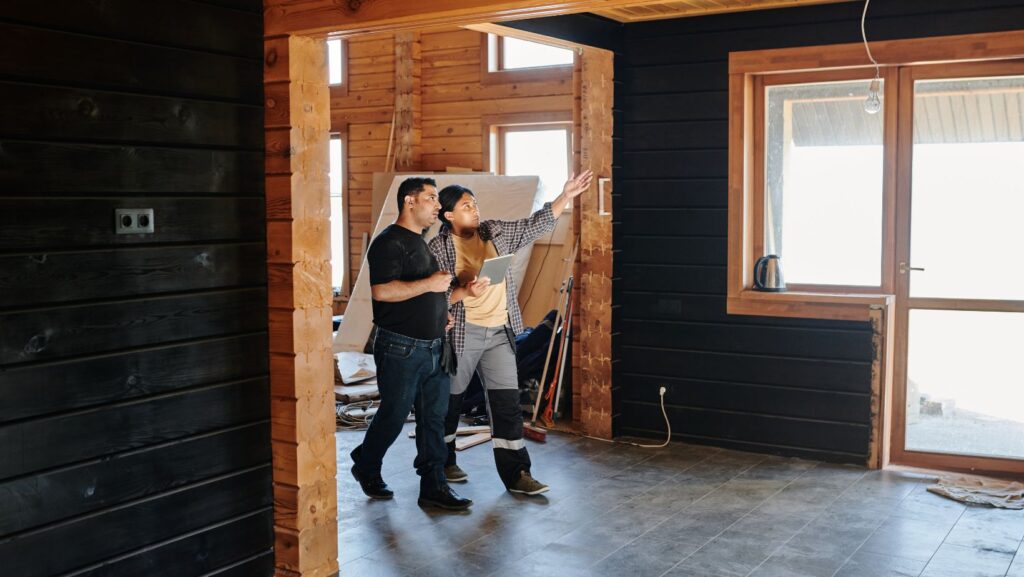Thinking about converting your London loft into a beautiful new living space? You’re not alone! With property prices soaring and space at a premium, loft conversions have become one of the most popular home improvement projects across the capital. But before you start dreaming about that perfect home office, extra bedroom, or creative studio, there are some essential steps you need to take to make your vision a reality.
Let’s walk through everything you need to know about getting your loft conversion project off the ground, from the technical drawings you’ll need to the all-important party wall considerations that could make or break your project.
Why Loft Conversions Are London’s Favorite Home Improvement
London’s housing market is notoriously challenging, making loft conversions an attractive alternative to moving house. Instead of facing stamp duty, estate agent fees, and the stress of finding a larger property, you can create the extra space you need right above your head.
The best part? A well-executed loft conversion can add significant value to your property. In many London areas, you could see a return of 15-20% on your investment, sometimes even more. Plus, you get to stay in your beloved neighborhood and keep all those local connections that make a house feel like home.
But here’s the thing – London’s unique housing landscape, with its Victorian terraces, Edwardian semis, and converted flats, creates some specific challenges that you won’t find elsewhere in the country.
The Foundation of Success: Professional Loft Conversion Drawings
Here’s where many DIY enthusiasts hit their first roadblock. You can’t just sketch your dream loft on the back of an envelope and expect builders to make it happen. Professional loft conversion drawings london are absolutely essential for several reasons.
Building Control Requirements
Every loft conversion in London needs building control approval – there’s no getting around this. Building control officers need to see detailed technical drawings that prove your conversion will be safe, structurally sound, and compliant with current regulations. These aren’t simple floor plans; they’re comprehensive technical documents that show:
- Structural calculations and load-bearing modifications
- Fire safety measures and escape routes
- Insulation and energy efficiency details
- Staircase specifications and safety features
- Window and door placements
- Electrical and plumbing layouts
Structural Engineering Integration
London’s older properties often require creative structural solutions. Your drawings need to show exactly how new floor joists will integrate with existing structures, where support beams will be positioned, and how loads will be distributed safely through the building.
Many Victorian and Edwardian homes have quirks that only become apparent when you start planning major modifications. Professional drawings help identify these challenges early, saving you from nasty surprises during construction.
Planning Permission Considerations
While many loft conversions fall under Permitted Development Rights, some require full planning permission. Professional drawings ensure you stay within the permitted parameters and provide the detailed information planning officers need if an application is required.
The London Challenge: Party Wall Agreements
This is where loft conversions in London get particularly interesting – and potentially complicated. If you live in a terraced house, semi-detached property, or converted flat, chances are you’ll need to deal with party wall requirements.
When You Need a Party Wall Surveyor London
You’ll definitely need a party wall surveyor london if your loft conversion involves:
- Installing steel beams that need to bear into party walls
- Cutting into shared walls for any reason
- Raising the height of party walls
- Working close to shared boundaries
- Potentially affecting your neighbor’s structural stability
The Party Wall etc. Act 1996 isn’t just bureaucratic red tape – it’s designed to protect both you and your neighbors from disputes and structural problems. Ignoring these requirements can lead to expensive legal battles and project delays that stretch on for months.
The Party Wall Process Made Simple
Working with a qualified party wall surveyor streamlines the entire process. They’ll assess your planned conversion, determine what notices need to be served, and handle all the legal paperwork. Here’s how it typically works:
Initial Assessment: Your surveyor reviews the conversion plans and identifies party wall implications.
Notice Serving: Formal notices are served to affected neighbors, giving them at least one month (sometimes two) to respond.
Neighbor Response: Neighbors can either consent to the work or dissent and request a formal party wall award.
Award Preparation: If needed, a detailed award is prepared outlining how the work will proceed and what protections are in place.
Schedule of Condition: A comprehensive survey documents the current state of neighboring properties before work begins.
The London Housing Context: Why Location Matters
London’s diverse housing stock creates unique challenges for loft conversions. Victorian terraces in areas like Clapham or Islington have different structural considerations than 1930s semis in suburbia or converted Edwardian mansions in places like Hampstead.
Victorian Terraces
These properties often have solid brick walls, traditional timber framing, and limited headroom in roof spaces. The party walls are typically substantial structures that require careful consideration when installing new structural elements.
Edwardian Properties
Generally offering more generous ceiling heights, these homes often provide excellent loft conversion potential. However, their construction methods and materials require specialist knowledge to modify safely.
Converted Flats
Perhaps the most complex scenario, where loft conversions might affect multiple neighboring properties and require coordination with freeholders and multiple leaseholders.
Getting Your Team Together: The Professionals You Need
Successful loft conversions require coordinated input from several professionals, each bringing essential expertise to your project.
Architects or Architectural Designers
They’ll create the overall design vision and produce the technical drawings needed for building control and planning applications.
Look for professionals with specific experience in London loft conversions – they’ll understand local challenges and requirements.
Structural Engineers
Essential for calculating loads, designing steel frameworks, and ensuring your conversion won’t compromise the building’s integrity. In London’s older properties, this expertise is particularly valuable.
Party Wall Surveyors
Your guide through the legal requirements and neighbor relations. Choose someone with strong local experience who can anticipate potential issues and handle them diplomatically.
Building Control
While not exactly “your team,” building control officers become key partners in ensuring your conversion meets all safety and regulatory requirements.
Timing and Project Planning: Setting Realistic Expectations
London loft conversions involve more moving parts than projects in other locations, so realistic timing is crucial for managing expectations and maintaining good neighbor relations.
Pre-Construction Phase
- Design development and drawing preparation: 4-6 weeks
- Party wall notices and responses: 1-2 months minimum
- Building control application processing: 4-8 weeks
- Planning permission (if required): 8-12 weeks
Construction Phase
Depending on complexity, most loft conversions take 6-12 weeks to complete. However, this assumes no complications arise from party wall disputes or unexpected structural discoveries.
Common Pitfalls and How to Avoid Them
Learning from others’ mistakes can save you time, money, and stress. Here are the most common issues London homeowners encounter:
Underestimating Party Wall Requirements
Many people assume that because they’re only working on their own property, neighbors aren’t affected. In London’s dense housing, this is rarely true. Get professional advice early.
Inadequate Drawings
Trying to save money with basic drawings often backfires when building control requests additional information or structural issues emerge during construction.
Poor Communication with Neighbors
Even when party wall procedures are followed correctly, maintaining good relationships with neighbors makes everything smoother. Keep them informed and address concerns promptly.
Ignoring Access Issues
London’s narrow streets and terraced housing can create significant access challenges for materials and equipment. Factor this into your planning and budget.
Making Your Loft Conversion Dream Reality
The key to a successful London loft conversion lies in thorough preparation, professional expertise, and realistic expectations. While the process might seem daunting at first, thousands of London homeowners successfully navigate these requirements every year to create beautiful, valuable new living spaces.
Start by getting your drawings professionally prepared – this foundation document will guide every other aspect of your project. Then address party wall requirements early, even if you think they might not apply. It’s much easier to confirm you don’t need agreements than to sort out disputes after work has begun.
Remember, every London property is unique, with its own character, challenges, and opportunities. Working with professionals who understand both the technical requirements and the local context will help ensure your loft conversion project succeeds, adding value to your home while creating the extra space your family needs.
The journey from cramped storage space to beautiful new room might involve some paperwork and planning, but the end result – a stunning new space that’s perfectly tailored to your needs – makes it all worthwhile.



More Stories
Thehometrotters.com Home Decor Ideas: Transform Your Space Today
From Color Choice to Comfort: The Ultimate Guide to Painting and Home Upgrades
The Complete Home Makeover: Green Lawns, Fit Lifestyles, and Smarter Spaces